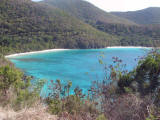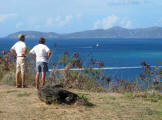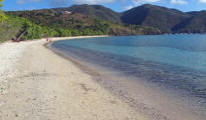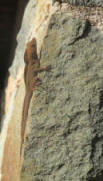

|
CARIBBEAN INDEX | |
|
|
|
◊ |
|
|
JOURNALS | |
◊ |
|
|
WINDWARD ISLANDS | |
◊ |
|
◊ |
|
◊ |
|
◊
|
TRINIDAD & |
◊ |
|
|
◊ |
GRENADINES |
◊ |
|
◊ |
|
|
LEEWARD |
|
◊ |
|
◊ |
|
◊ |
|
◊ |
|
◊ |
|
◊ |
|
◊ |
|
|
◊ |
USVI's |
|
|
|
|
U.S. VIRGIN ISLANDS, CARIBBEAN |
|
 |
The U.S. Virgin Islands is the group of islands located in the Leeward Caribbean chain consisting of the main islands of Saint Croix, Saint John and Saint Thomas, along with many other surrounding minor islands. The inhabitants of the USVIs are of Afro-Caribbean descent. Formerly the Danish West Indies, the islands were sold to the United States by Denmark. |
| ST. JOHNS | ST. THOMAS |
|
|
|
|
With more than 20 miles of hiking trails, we did a lot of walking. Hikes over the ridges afforded great views of the channel and anchorages below.
Pictured right is the remains
of a |
|
Santa Cruz
Santa Cruz is the hub of the island, where tourists are brought in by the boatload. It still retains much charm and a feeling of tradition. |
 |
<<< Colorful kayaks
The local School |
 |
| Next >>> St. Thomas |
.gif)





















